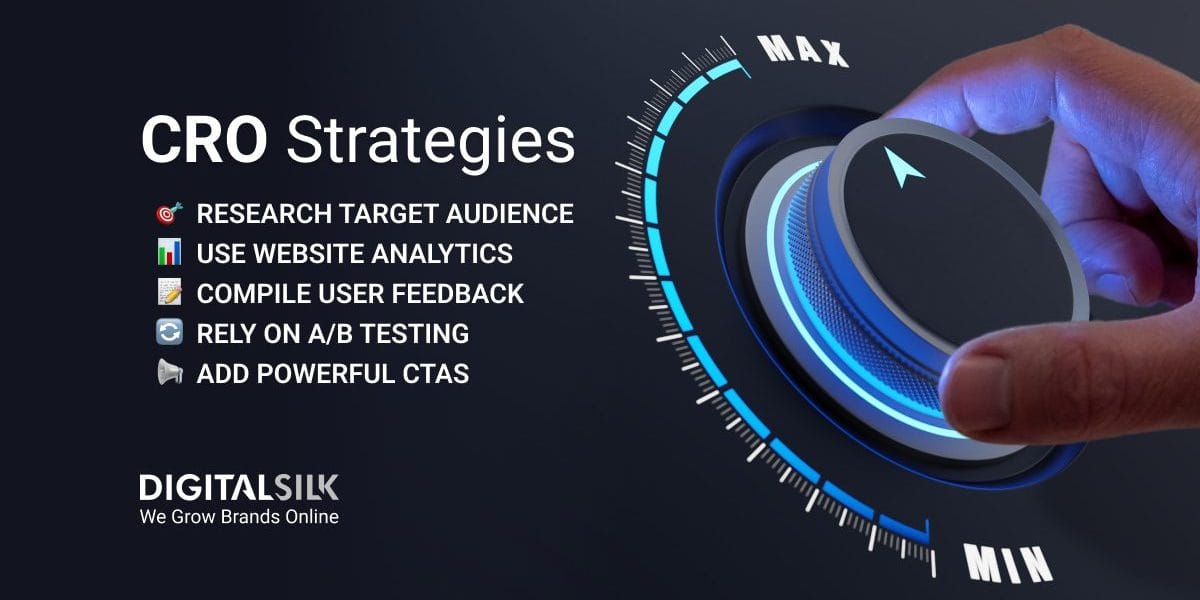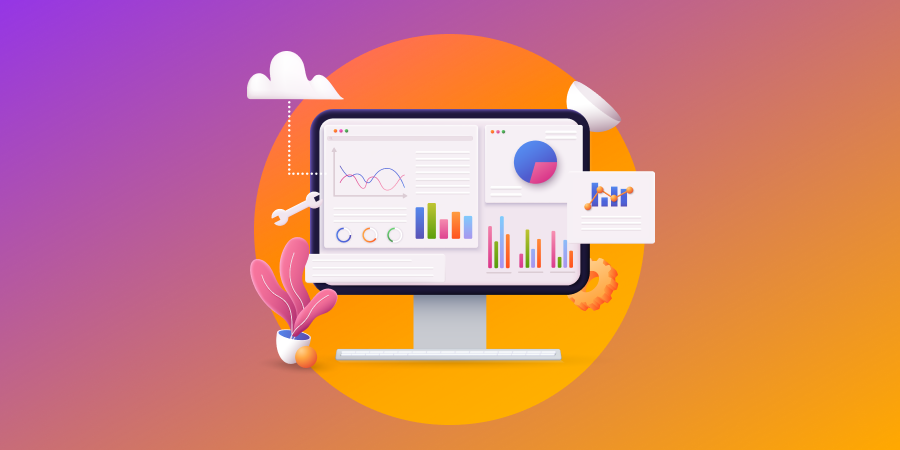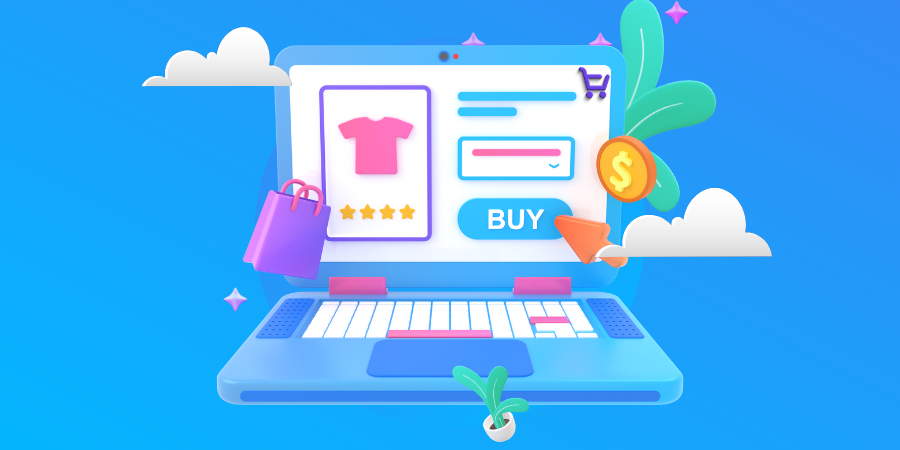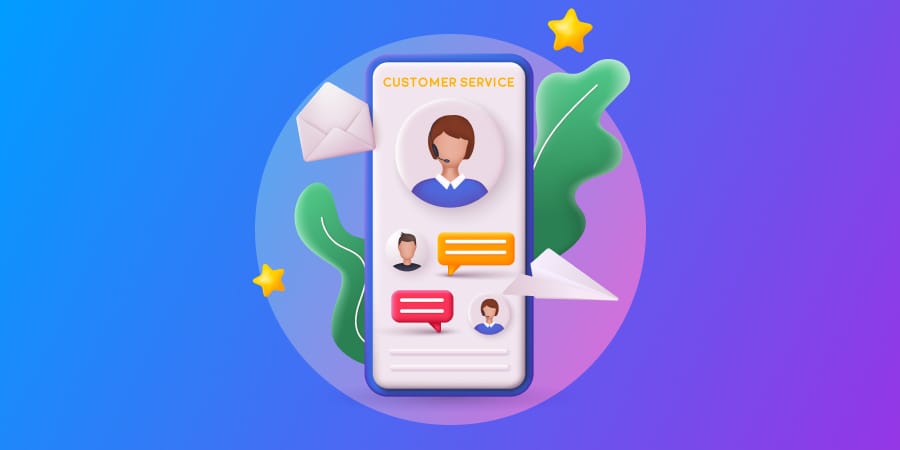Whether the main conversion on your website is a contact form submission, subscription signup or purchase, the goal remains the same: to convince your website visitors to complete their journey.
At surface level, website conversion rates measure just that. In reality, they help you dive much deeper.
Discover the “hows” and the “whys” of website conversion rates in our guide, as well as industry benchmarks and case studies from our very own digital projects below!
How To Increase Your Website Conversion Rates
Boosting conversion rates with qualified leads takes internal and external reflection. You need to pair your UX with your audience’s behaviors and desires.
Here are 10 vital steps to take to boost your conversion rates:
1. Research Your Target Audience
Create user personas and perform SERP research to understand the demographics and behaviors of your target audience.
This way, you can gain insights into who they are, how they act, and what they’re looking for (the pain points they want to solve).
Armed with this info, you can design a site that speaks to them through tailored messaging, caters to their search and navigation needs and meets their aesthetic expectations.
2. Analyze Your Website Analytics
By checking time-on-page, bounce rate and other key performance indicators (KPIs), you can tell which areas of your site are performing and which fall short.
This will give you an opportunity to rework messaging, design and other elements as needed to increase engagement and conversion.
3. Compile Feedback From Your Visitors
Hearing directly from your target audience is another way to highlight what works well on your website and where your conversion funnel can be improved.
By conducting surveys or feedback sessions, you can hear what your target audience thinks directly from the source.
4. A/B Test Your Website
A/B testing helps you to work out which elements of your website work best.
By comparing the conversion rates of different layouts, design features and messaging, you can decipher which resonates best with your audience to produce the greatest number of valuable conversions.
This allows for continuous optimizations, proper allocation of resources and ultimately, a conversion-focused website.
5. Streamline Your User Journeys
Streamlining your website’s user journeys centers around reducing friction and frustration for your site’s visitors.
Prepare a carefully structured sitemap before developing your website, then make sure to boldly signal your user journey through navigation menus, CTAs and internal linking strategies.
6. Create Multiple Paths To Conversion
Your website visitors will land on your site from different pathways, with varying intentions and awareness about your brand.
By creating multiple user journeys within your website, you can cater to visitors at different stages of your conversion funnel.
Each path will meet their specific intentions, in turn leading them closer to conversion.
7. Add Powerful CTAs
CTAs are core drivers in boosting your conversion rates, as they help to guide your visitors to your key conversion points.
By taking time to craft powerful, relevant CTAs that show the visitor exactly what to expect once clicked, you are increasing the possibility of attracting and converting your leads.
8. Strategically Place Your Messaging
Having created your website’s structure, you can carefully place messaging across your pages and to enhance your conversions. Messaging should be clear and direct and be tailored to where the user is at in their journey (top of the funnel, mid-funnel, and bottom of the funnel messaging).
Whether adding CTAs, headings, or other forms of copy, techniques such as heat mapping can help to determine where you should place your key messaging.
9. Consider Your Tone Of Voice
Research the tone of voice that will resonate with your audience by analyzing the details of your user personas.
Develop a guide for your messaging and make sure its consistent throughout your website and all other channels, such as social media or email marketing.
10. Create Consistency Across Channels
Create consistency across channels by making sure your messaging and branding aligns across channels.
Consistency increases recognition, which in turn can help increase trust and conversion.
11. Leverage High-Intent Keywords
Using high-intent keywords — phrases that indicate a user’s intention to take action — can help attract more qualified visitors to your website.
These keywords are closely linked to user goals and often lead to improved conversion rates.
To use them effectively, conduct thorough keyword research to identify terms that align with your offerings. Incorporate these keywords naturally into your content to enhance search rankings and drive conversions
How Digital Silk Increases Website Conversion Rates
As a full-service agency, our team at Digital Silk consists of award-winning designers, as well as website developers, strategists, branding experts and more.
To build websites optimized for conversion, we use in-depth research to understand the behaviors, patterns and intentions of your target audience.
With a blend of expertise and innovation, we optimize your user -flow with detailed wireframing to create a seamless conversion funnel. We implement on-brand messaging to communicate directly with your audience and ensure branding consistency across channels.
Check out the case studies below to find out how we increased conversion rates for some of our clients.
1. Xerox
Xerox produces and sells office technology, such as printers and scanners.
The company came to us needing a new digital strategy and website design to capture B2B leads for their new printer technologies.
In response, we built an entirely new landing page and combined it with fresh paid media, retargeting and email marketing campaigns.
Specifically, we added messaging based on important buying triggers and simplified Xerox’s contact form and brochure download processes to drive conversions.
The result: a 43% conversion rate for nurtured leads and a 20% sales increase for Xerox Versalink in just six months.
2. doForms
doForms is a mobile forms software provider.
The brand partnered with our web design team to transform their website into a user-friendly solution, to drive visitors towards their offering via conversion points, while limiting abandoned contact forms and signup buttons.
Starting with a website audit, we delved into doForms’ visitor pain points. Then, using wireframing and custom development, we created a new sitemap that streamlined user journeys to conversion.
We also removed any “zombie pages” that generated zero traffic, instead focusing on new, valuable content creation via their homepage, free trial page, product page and blog.
The result: 21% and 18% lower bounce rates on their contact and free trial pages respectively in just two months.
3. Rollink
Rollink is an innovative eCommerce luggage brand.
They enlisted the support of our designers to support their launch in the U.S. by driving conversions and sales through a bespoke, revamped digital strategy.
We created an enhanced user experience through engaging design elements, an immersive product experience and a checkout page optimized for conversions with multiple payment options, guest checkout and enticing CTAs.
The result: a 500% increase in revenue upon launching in the U.S.
Why Measure Website Conversion Rates?
Measuring your website’s conversion rate gives you a wider understanding of two core aspects of your digital presence: your customers and your user experience (UX).
1. To Measure Your UX
UX-optimization is the process of understanding how visitors interact with your website and creating an experience that is relevant and valuable to them.
UX-optimized web designs can increase conversions by up to 400% — more than double the impact of a strong user interface (UI).
In turn, a high conversion rate generally relates to a highly optimized UX.
The key characteristics of UX you can measure with conversion rates include:
- User journeys: Conversion rates can measure how easily visitors navigate your site and reach their intended destinations (and then convert) through helpful menus, calls-to-action and messaging.
- Site performance: Conversion rates can measure how well your site performs in terms of loading speeds, backend code and frontend appearances.
2. To Understand Your Audience
Conversion rates are a vital indicator of how your visitors interact with your website.
While you will need to do a deeper dive into individual leads to understand who exactly is converting, measuring conversion rates can help you understand:
- What type of messaging your target audience responds best to
- Whether your website is attracting the right audience for your products or services
- How your leads are reaching your website (through which channels)
Average Conversion Rates
Conversion rates are affected by endless factors, meaning they vary across businesses, industries and channels, among other factors.
Because of this variation, you’ll want to compare your rate specifically to businesses in your industry, instead of benchmarking against vague averages.
Consider the following categories for your benchmarks:
- Industry
- Device
- Location
1. Average Conversion Rates By Industry
Conversion looks different depending on the industry.
While purchasing a pair of trainers is a conversion for Nike, signing up for a subscription is a conversion point for The Economist.
We’ll focus on eCommerce for this example. Here’s how global online shopping conversion rates line up by industry, according to IRP Commerce:
- Arts & crafts: 5.46%
- Cars & motorcycling: 1.36%
- Electrical & commercial equipment: 1.18%
- Fashion, clothing & accessories: 1.88%
- Food & drink: 0.76%
- Health & wellbeing: 3.58%
- Kitchen & home appliances: 3.23%
- Petcare: 2.15%
- Sports & recreation: 1.79%
2. Average Conversion Rates By Device
The device used to view your website can also play a part in your conversion rates.
Modern websites prioritize responsive design and accessibility for all, adapting the UX depending on the device used.
According to recent research, conversion rates by device are as follows:
- Mobile: 2.83%
- Desktop: 4.12%
- Tablet: 3.61%
3. Average Conversion Rates By Location
Geography plays a major role in the way visitors convert.
Consumers in some regions are more cautious, requiring higher numbers of touchpoints before making a decision.
Others, meanwhile, take less convincing.
Find the latest website conversion rates in major economies across Europe and the United States below:
- United States: 2.3%
- Germany: 2.22%
- Denmark: 1.80%
- Netherlands: 1.78%
- Italy: 0.99%
- United Kingdom: 4.1%
How To Calculate Your Website Conversion Rate
To work out your website conversion rate, one of the easiest ways is simply using our Conversion Rate Calculator tool.
But anyway, you need to find your total number of conversions. To do this, personalize Google Analytics’ goals section, which will allow you to track a specific conversion rate and location from your website.
Next, divide your conversions by your total website visitors and multiply that number by 100.
Put simply:
Number of conversions / Number of visitors X 100 = Conversion rate
#1. A contact form receives 150 submissions from 17,500 views. What is the conversion rate?
#2. A newsletter receives 500 new subscribers out of a site’s 1,000 total visitors. What is the conversion rate?
#3. A product is bought 100 times from 5,900 page visits. What is the conversion rate?
Results
Congrats! You got 3/3.
Want to boost your website’s conversion rates? Contact our experts to set up a free consultation for your business.
Better luck next time.
Want to boost your website’s conversion rates? Contact our experts to set up a free consultation for your business.
Maximize Your Conversions With Digital Silk
Looking to build a website that connects with your target audience and drives conversions through high-quality UX?
You’ve come to the right place.
By following a research-based process, we deliver digital solutions tailored for your brand and its audience.
Our digital solutions include:
- Custom website design
- End-to-end web development
- Digital marketing
- Lead generation
- Search engine optimization
At Digital Silk, we approach every project with:
- Project ownership: Treating each project as if it were our own, we use our expertise to craft an on-brand website design that resonates with your target audience.
- Transparency: Involving you in every step of the journey, we ensure the possibility of feedback while promising no hidden fees or costs.
- Measurable results: Delivering each decision with your targets in mind, we drive end results that you can see.
Tell us about your project requirements and set the wheels to growing your brand online in motion.
Contact our team, call us at (800) 206-9413 or fill in the request a quote form below!
Conversion Rate Optimization FAQs
Delays in page load speed can significantly impact conversion rates, as visitors can get frustrated and leave before completing an action. Optimize your images, minimize HTTP requests and use browser caching for a faster website.
With most traffic coming from mobile devices, adopting a mobile-first strategy can boost website conversions. Use touch-optimized designs, responsive layouts and clear call-to-actions to provide a seamless user experience for mobile devices.
Use clear, concise and action-oriented language in your CTAs. Place them strategically on your website, such as above the fold or throughout a blog post. Use contrasting colors and easily readable fonts so they stand out against the background.
Websites with simplified navigation, quick access to information and engaging design can engage, retain and convert visitors more effectively. Conduct user testing, analyze website metrics and continually make improvements to enhance the overall UX.
Visuals speak louder than words because they can evoke emotions and tell a story. Use high-quality images and videos to capture visitors’ attention, communicate your brand message and guide them towards conversion.
Security is a major concern for online users and displaying trust indicators such as security badges, customer reviews and privacy policies can help build credibility and encourage visitors to take action. You can also offer clear return and refund policies to alleviate doubts or concerns.
"*" indicates required fields












